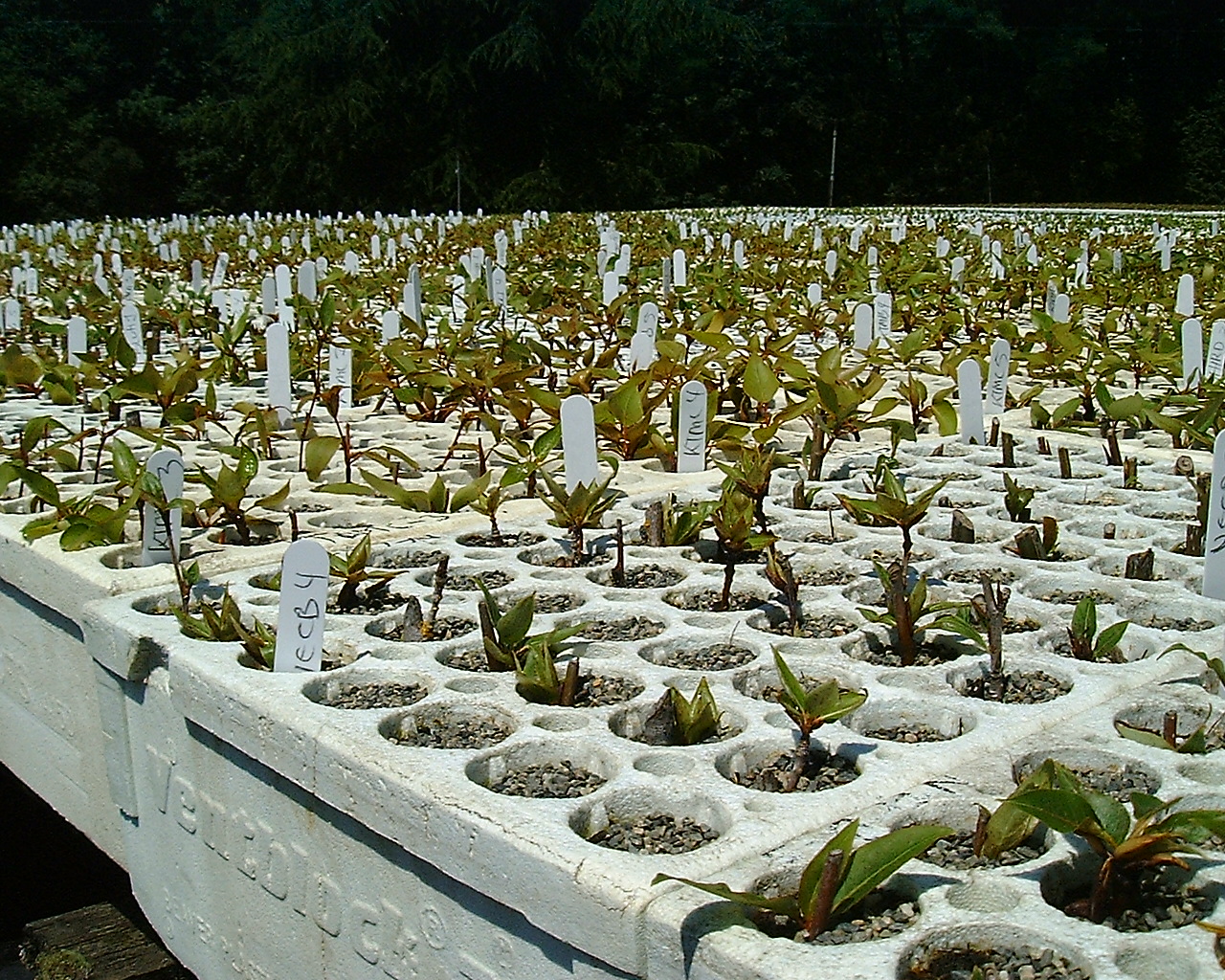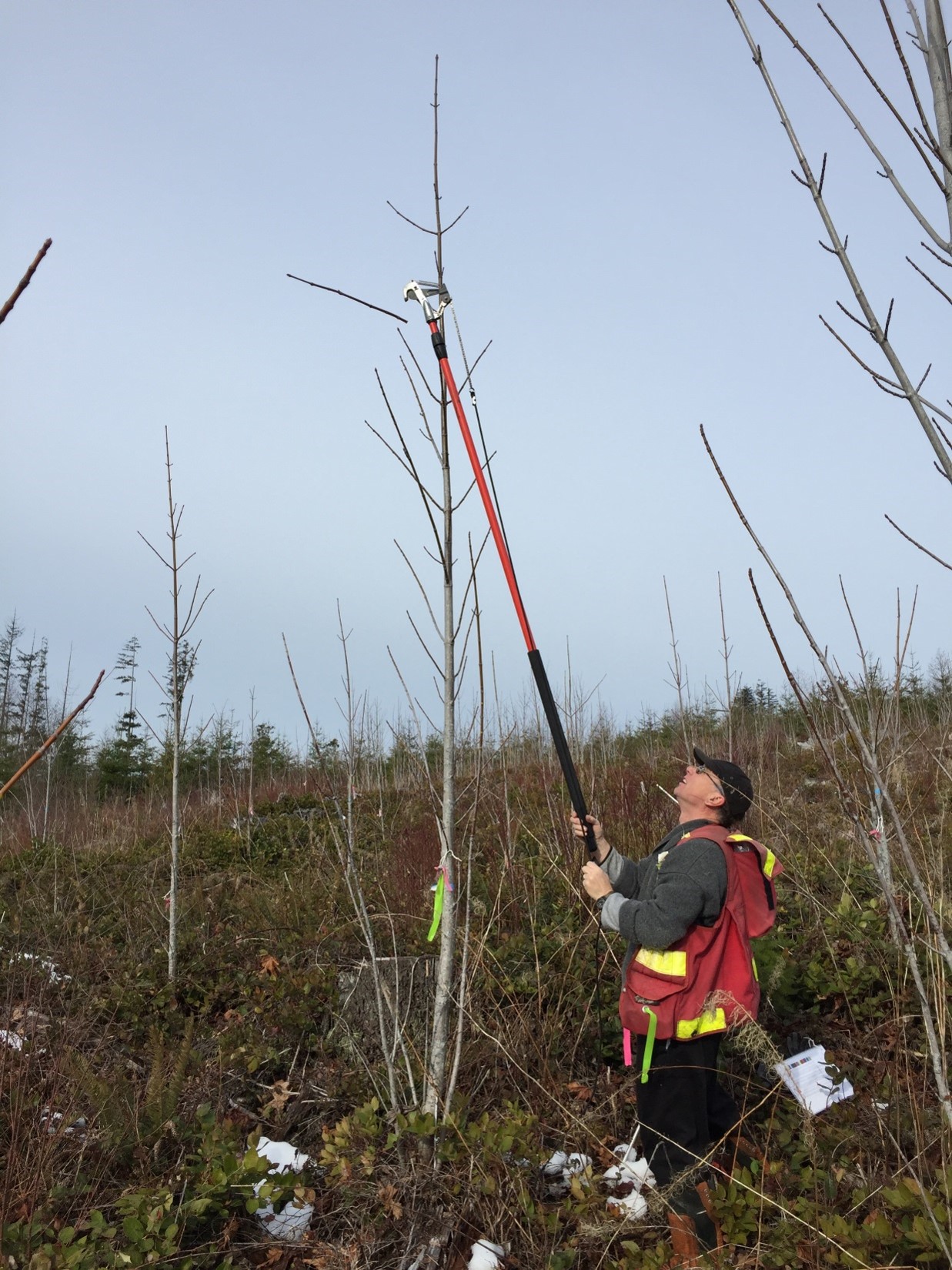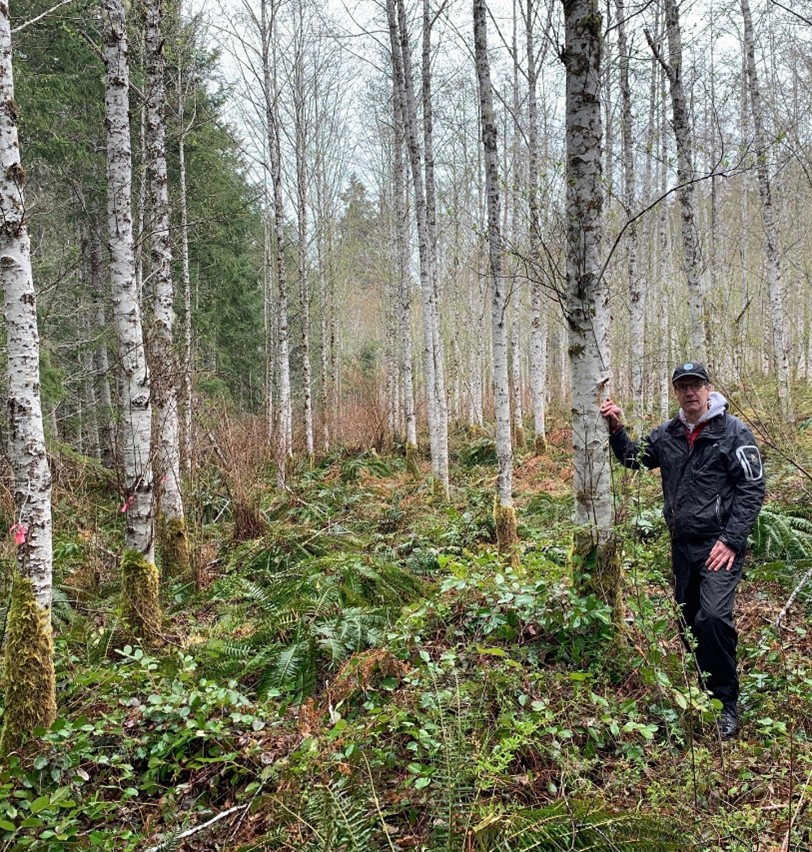Coastal broadleaf tree breeding programs
Broadleaf trees grow rapidly and provide valuable wood to value-added mills for finishing products, veneer, cabinetry, flooring and pulp.
On this page
Black cottonwood
B.C.'s black cottonwood genetics program started with a collection of 900 clones in 1995. The clones came from 180 provenances across the entire range of the species in B.C., Washington and Oregon.
In 2005, two field provenance-clonal trials were established with materials from the Surrey common-garden test. The two sites located near Terrace and Prince George were phased out in 2016. A southern site at Harrison Mills was established in the spring of 2007. About 450 clones from 120 provenances were tested. The trial at Harrison Mills was abandoned in 2011 due to serious river erosion and beaver damage.
A clone bank with about 100 clones has been established at the Saanich Seed Orchard. The clones were selected based on four-year performance at Harrison Mills.
Bigleaf maple
The main objectives of the initial bigleaf maple studies were to test the species’ genetic variability and potential as a plantation species.
In 1995, seeds were collected from 14 natural populations, each represented by 8 to 14 trees, throughout the species’ natural distribution in B.C. A short-term common garden test was established at the Surrey Nursery in 1996. Two long-term field tests were also established near Duncan on Vancouver Island in 1997. Severe drought at the Cowichan Valley site and heavy vegetative competition at the Crofton site resulted in high mortalities at both sites and the two trials were abandoned in 2005.
In 2008, a new test program was initiated at three test sites:
- Southern Vancouver Island
- Northern Vancouver Island
- Sunshine Coast
Assessments of growth and condition were conducted in 2010, 2013 and 2017. Forward selections were made based on the 10-year test results. A clone bank is being established at the Cowichan Lake Research Station, and potentially a seed orchard at some later date.
Red alder
Red alder (Alnus rubra) is a pioneer, deciduous, broadleaf tree species that grows widely in coastal North America from the Alaska panhandle to central California. Although it has been a minor commercial species in BC., there has long been interest in the genetics, growth and yield and silviculture of red alder in the Pacific Northwest.
Various studies on the genetics of red alder have been conducted over the last 30 years. One open-pollinated, first-generation seed orchard was established in 2013, with an expected annual seedling production of 0.4 million. Seed orchard parents were selected based on 10-year test results at one site near Bowser on Vancouver Island with about 25 percent expected genetic gain in stem volume at rotation age 35 years.
There is renewed interest in red alder due to its rapid growth potential in relation to co-occurring conifers, excellent soil remediation properties, resistance to root rot, favourable wood properties, and possible increased growth trends under climate change. 13 provenance-progeny trials were established in 2015 in a wide range of coastal biogeoclimatic zones. Data from these trails at age six, have been used to update the climate-based seed transfer recommendations of red alder, as well as providing a new source of improved germplasm for a subsequent seed orchard in the near future.
Black cottonwood references
- C.-Y. Xie, C. C. Ying, A. D. Yanchuk and D. L. Holowachuk. 2009. Ecotypic mode of regional differentiation caused by restricted gene migration: a case in black cottonwood (Populus trichocurpa) along the Pacific Northwest coast. Can. J. For. Res. 39: 519-526.
- C.-Y. Xie, M. R. Carlson and C. C. Ying. 2012. Ecotypic mode of regional differentiation of black cottonwood (Populus trichocurpa) due to restricted gene migration: further evidence from a field test on the northern coast of British Columbia. Can. J. For. Res. 42: 400-425.
Red alder references
- Xie, C.Y. 2008. Ten-year results from red alder (Alnus rubra Bong.) provenance-progeny testing and their implications for genetic improvement. New Forests 36:273-284.
- Xie, C.Y., Y.A. El-Kassaby and C.C. Ying. 2002. Genetics of red alder (Alnus rubra Bong.) populations in British Columbia and its implications for gene resources management. New Forests 24: 97-112.
- Xie, C.Y., C.C. Ying, and P. Courtin. 1996. Genetic variability and performance of red alder (Alnus rubra Bong.) in British Columbia. Proc. Ecol. Manage. of BC Hardwoods. Dec. 1-2, 1993. Richmond, British Columbia.
- Dang, Q.L., C.-Y. Xie, C.C. Ying and R.D. Guy. 1994. Genetic variation of ecophysiological traits in red alder (Alnus rubra Bong.). Can. J. For. Res. 24: 2150-2156.

Rooted cuttings of Populus trichocarpa and Populus balsamifera were planted on three sites in 2005 as part of a range-wide provenance study.

Collecting bigleaf maple scion material from an elite selection (10 years) at the Powell River test site.

The 30-year Bowser red alder test site, where selections have been made for seed orchard #409.
